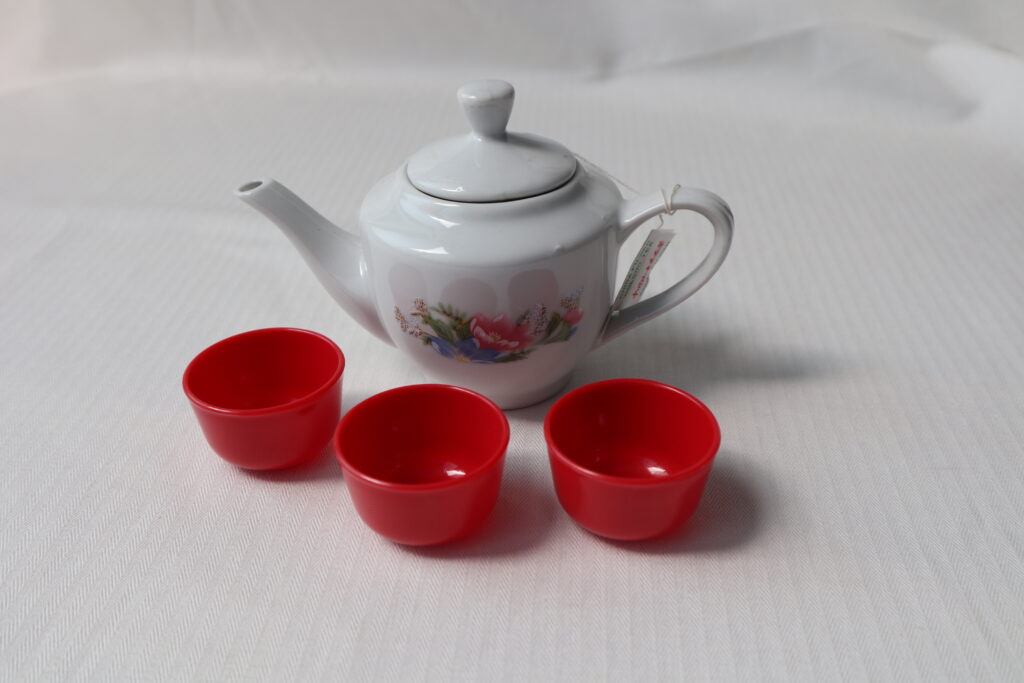
Description of Ritual/Practice
- Food is laid out on the table in front of the coffin. Traditionally, daughters/daughters-in-law/granddaughters-in-law are supposed to prepare the daily meals for the deceased and make these offerings.
- Slightly grander offerings are served on the last day, usually with three sacrificial animals 三牲 or five sacrificial animals 五牲 including roast pork, roast duck and/or roast chicken
- 洗脸水 – A small basin with towel, toothbrush, toothpaste and comb is set on a chair next to the coffin. The daughter-in-law or daughter is supposed to prepare these items for the wake. This is based on the belief that the deceased is still very much with the living and therefore still practices hygiene and grooming. The practice also echoes the filial piety in 买水: helping to bathe the deceased. (Image of basin below)

Who practices it? Who conducts the ritual?
Family members
Is it still practiced now?
- Many offer food that the deceased preferred when alive, with less rigidity on the type of food to be offered.
- Vegetarian food is offered at Buddhist funerals.
- Descendants are increasingly serving the deceased food from the meals catered at the wake.
- With 洗脸水 – some casket companies provide a vanity to lend the funeral wake a more professional feel. Others may continue to use a chair to hold these items.
Other Interesting Information
For many Cantonese, roast pork is often offered because its fatty content is synonymous with abundance; informing the deceased and ancestors that the descendants are doing well, and that they can leave in peace. This is consistent with the need to provide a spread on the night of the deceased’s final return.